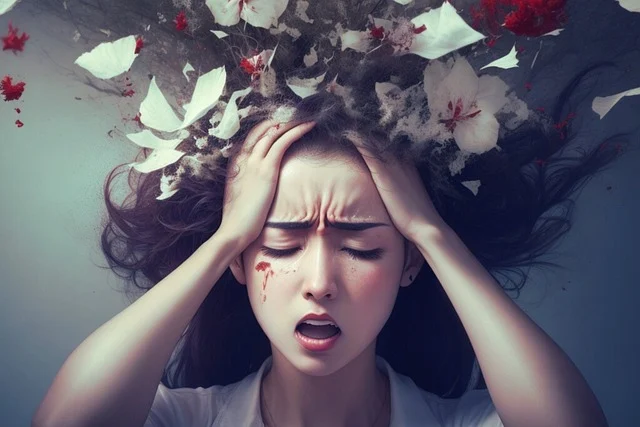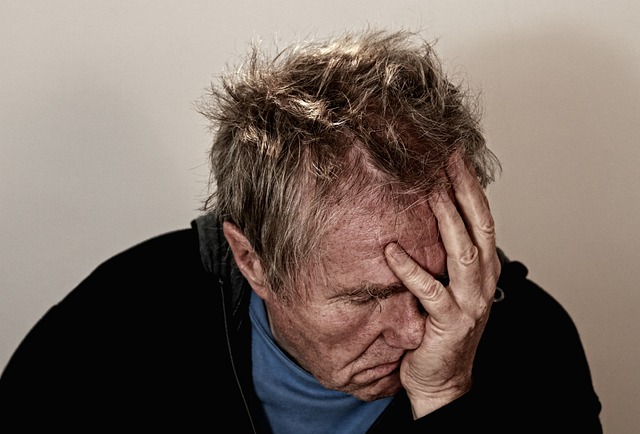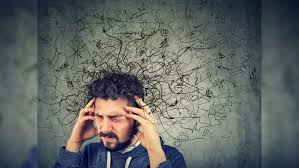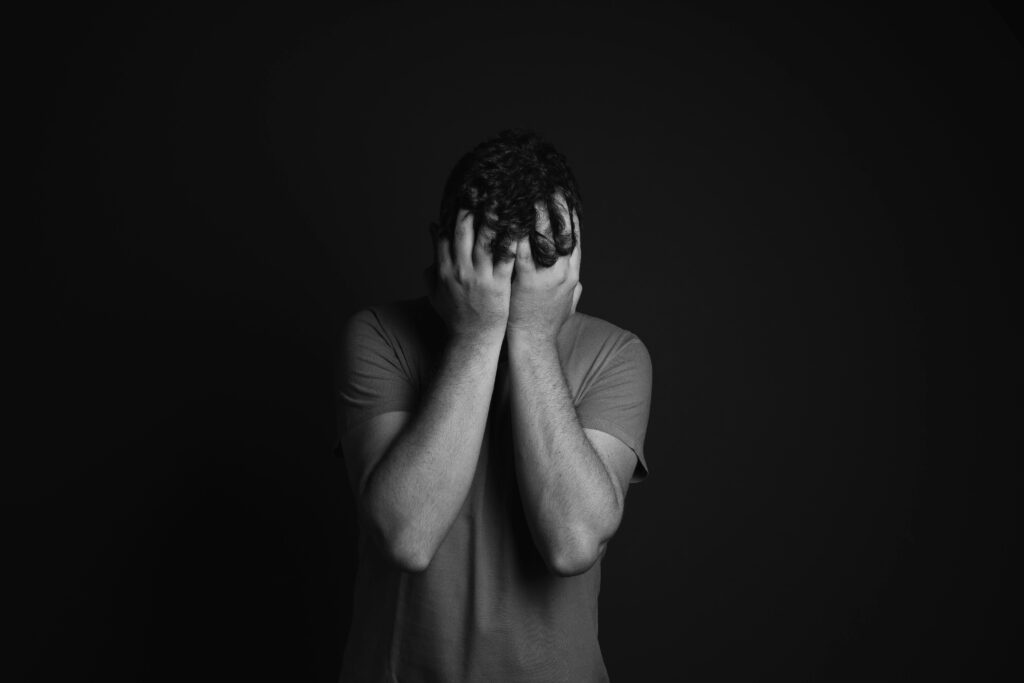Table of Contents

Introduction
Anxiety Without Medication is a pervasive mental health condition that affects millions of individuals across the globe, regardless of age, gender, or background. It is characterized by excessive worry, fear, and nervousness that can be debilitating and significantly impair daily functioning.
The physical symptoms of anxiety are equally distressing, including a rapid heartbeat, profuse sweating, and a sense of restlessness that can be hard to shake. Anxiety can manifest in various forms, such as generalized anxiety disorder, panic disorder, social anxiety disorder, and specific phobias, each presenting its unique challenges and triggers. For many, the conventional treatment options involving medication are fraught with concerns regarding side effects, dependency, and potential long-term implications.
Some individuals may experience adverse reactions to prescribed medications, while others may simply prefer to explore alternative methods that align more closely with their personal values and lifestyles. As such, there is a growing interest in natural anxiety relief strategies that offer a holistic approach to managing anxiety.
This article delves into the realm of natural solutions, presenting five science-backed strategies that can be integrated into one’s lifestyle to alleviate the symptoms of anxiety without relying on medication. These strategies encompass mindfulness, physical activity, dietary adjustments, breathing techniques, and lifestyle changes.
Through a dedicated exploration of each, we aim to provide readers with a comprehensive guide to managing anxiety in a way that is both effective and aligned with their personal preferences for wellness, empowering them to take charge of their mental health.
1. The Power of Mindfulness and Meditation
Mindfulness is a mental health practice that involves focusing one’s awareness on the present moment, while calmly acknowledging and accepting one’s feelings, thoughts, and bodily sensations. It is a technique that has gained considerable traction in the treatment of anxiety due to its ability to help individuals break free from the relentless cycle of anxious thoughts.
The core principle of mindfulness is to pay attention to the present moment without judgment, which can lead to a heightened sense of calmness and emotional regulation. This practice encourages individuals to observe their thoughts and feelings without being overwhelmed by them, creating a mental space that fosters clarity and resilience.
Mindfulness and anxiety are intrinsically linked, with numerous studies demonstrating that mindfulness practices can significantly reduce anxiety levels. One of the key ways mindfulness achieves this is by reducing overthinking. By training the brain to focus on the current moment, it becomes less likely to succumb to the endless loops of worry that are characteristic of anxiety.
Additionally, mindfulness has been shown to lower cortisol levels, which is the hormone responsible for the body’s stress response. High cortisol levels can exacerbate anxiety symptoms, making this an essential component of managing the condition. Regular practice can cultivate an awareness that allows individuals to recognize early signs of anxiety, thereby enabling them to address these feelings proactively.
Meditation is a complementary practice to mindfulness, often employed in conjunction with it. It encompasses various techniques that encourage relaxation and focus, thereby reducing stress and anxiety. There are numerous meditation techniques that can be tailored to individual preferences, including guided meditations, body scan meditations, and breath awareness meditations.
Guided meditation, for instance, involves listening to a calming voice that leads you through a series of relaxation exercises. This can be particularly beneficial for those new to meditation as it provides structure and direction, making it easier to stay focused.
Body scan meditation involves mentally scanning the body from head to toe, identifying and releasing areas of tension. This technique can be particularly effective in reducing the physical symptoms of anxiety. Breath awareness meditation, on the other hand, emphasizes the importance of deep, rhythmic breathing to achieve a state of tranquility.
To reap the benefits of mindfulness and meditation, it is recommended to practice for at least 10-15 minutes each day. Over time, these practices can lead to a significant reduction in anxiety levels, greater emotional resilience, and an enhanced ability to cope with stressors.
Creating a dedicated space for mindfulness and meditation can further enhance the effectiveness of these practices, allowing individuals to cultivate an environment that promotes relaxation and focus.


2. The Role of Exercise and Physical Activity in Anxiety Management
Physical activity is a natural and potent antidote to anxiety. Exercise has been shown to increase the production of neurotransmitters such as serotonin and dopamine, which are crucial in regulating mood and reducing stress.
Moreover, it can also decrease the levels of stress hormones like cortisol and adrenaline, which are often elevated in individuals with anxiety. Regular exercise further contributes to the regulation of sleep patterns, which can be adversely affected by anxiety. The relationship between physical activity and mental well-being is well-documented, with numerous studies indicating that engaging in regular exercise can lead to significant improvements in mood and reductions in anxiety levels.
Different types of exercise can be beneficial for managing anxiety, and it is essential to find what works best for you. Some may find solace in the gentle, restorative movements of yoga, while others may prefer the more vigorous activities such as walking, running, or strength training. Each of these forms of exercise offers unique benefits:
- Yoga combines physical movement with deep breathing and meditation, providing a holistic approach to anxiety relief. It is known for its calming effects and its ability to promote relaxation and self-awareness. The emphasis on breath control and mindfulness in yoga can enhance its benefits, creating a deeper connection between mind and body.
- Walking or running allows for a rhythmic and repetitive movement that can help to clear the mind and provides a sense of grounding. These activities can be performed almost anywhere and require minimal equipment, making them highly accessible. The simple act of being outdoors and connecting with nature can amplify these benefits, providing additional mental health advantages.
- Strength training can enhance self-confidence and provide a healthy outlet for the physical tension that often builds up in response to anxiety. The focus on setting and achieving personal fitness goals can also encourage a positive mindset and enhance feelings of accomplishment.
- Dancing offers a fun and expressive way to increase endorphins, the body’s natural feel-good chemicals, which are known to combat anxiety and improve mood. Engaging in dance can also foster social connections, further contributing to emotional well-being.
To maximize the benefits of exercise for anxiety relief, it is essential to engage in some form of physical activity for at least 20-30 minutes per day. This can be divided into smaller sessions if needed, but the goal is to make movement a consistent part of your routine. Incorporating variety into your exercise regimen can prevent boredom and keep motivation levels high, making it easier to stick with an active lifestyle.
3. The Influence of Nutrition on Anxiety
The foods we consume play a vital role in our mental health, including our propensity for anxiety. Certain nutrients have been found to have anxiolytic effects, meaning they can help reduce anxiety symptoms. Conversely, other foods can exacerbate anxiety.
The relationship between nutrition and mental health is an area of growing research, revealing that what we eat can significantly influence our emotional states.
Omega-3 fatty acids, found in foods such as fatty fish, flaxseeds, and walnuts, are essential for brain function and have been shown to reduce inflammation, which can contribute to anxiety. Magnesium, which is abundant in leafy greens, nuts, and whole grains, is crucial for the regulation of the nervous system and can help mitigate the physiological symptoms of anxiety.
Vitamin B complex is another critical nutrient for mental health, as it supports the production of neurotransmitters that regulate mood and stress responses. These nutrients, when consumed as part of a balanced diet, can help stabilize mood and reduce anxiety over time.
On the flip side, it is essential to be aware of foods that may trigger or worsen anxiety. These include:
- Caffeine, which can increase heart rate and induce jitters, potentially exacerbating feelings of anxiety and restlessness.
- Refined sugar, which can cause dramatic fluctuations in blood sugar levels, leading to mood swings and irritability.
- Processed foods, which often contain additives and preservatives that can negatively impact mental health, causing inflammation and disrupting gut health.
To support emotional well-being and reduce anxiety symptoms, it is advisable to adopt a balanced diet rich in whole foods, lean proteins, complex carbohydrates, healthy fats, and an array of fruits and vegetables. This approach can lead to a more stable mood and a greater sense of emotional equilibrium. Keeping a food diary can also help individuals identify specific foods that may trigger anxiety and allow them to make more informed dietary choices.


4. The Calming Effects of Breathing Techniques and Relaxation Practices
Breathing exercises are a quick and effective way to manage anxiety. When we are anxious, our breathing tends to become shallow and rapid, which can perpetuate the cycle of anxiety. By consciously practicing deep, controlled breathing, we can activate the body’s parasympathetic nervous system, which is responsible for promoting relaxation. This physiological response can counteract the fight-or-flight response that anxiety triggers, allowing individuals to regain a sense of control and calm.
Diaphragmatic breathing is one such technique, where you inhale deeply through your nose, filling your belly with air, and exhale slowly through your mouth. This encourages the diaphragm to engage fully, allowing for maximum oxygen intake and a more profound sense of calm. Another popular technique is box breathing,
which involves inhaling for four counts, holding the breath for four counts, exhaling for four counts, and then pausing again for four counts before repeating the cycle. This structured approach can help individuals focus on their breath and create a sense of rhythm that calms the mind. The 4-7-8 breathing technique involves inhaling for four seconds, holding the breath for seven seconds, and exhaling for eight seconds, which can help to slow the heart rate and reduce the physiological symptoms of anxiety.
Beyond breathing exercises, there are other relaxation practices that can be beneficial:
- Progressive Muscle Relaxation (PMR) involves systematically tensing and relaxing muscle groups throughout the body to release tension. This technique not only fosters physical relaxation but also encourages individuals to become more aware of bodily sensations.
- Aromatherapy employs the use of essential oils such as lavender, chamomile, and bergamot, which have been shown to induce a state of relaxation and reduce anxiety levels. Incorporating aromatherapy into daily routines can create a soothing atmosphere that supports mental well-being.
- Listening to calming music has a soothing effect on the mind and can lower stress and anxiety levels. Creating a playlist of calming tracks can serve as a valuable tool for those moments when anxiety feels overwhelming.
Consistency is vital when it comes to these practices. Incorporating them into your daily routine can lead to significant improvements in managing stress and anxiety. Setting aside specific times each day to practice these techniques can help establish a routine that fosters emotional resilience.
5. The Impact of Lifestyle Changes and Social Support
Addressing the root causes of anxiety often requires examining and adjusting various aspects of one’s lifestyle. Two critical areas to consider are sleep hygiene and digital habits.
Sleep hygiene refers to the practices and habits that are conducive to good sleep quality. Given that anxiety can interfere with sleep, it is essential to establish a routine that supports restful sleep. This includes adhering to a consistent sleep schedule, limiting exposure to screens and bright lights before bedtime, and creating a calming environment for sleep, which may involve a relaxing pre-sleep routine like reading or meditating. Incorporating relaxation techniques before bedtime can help signal to the body that it is time to wind down, fostering a more peaceful sleep environment.
Digital detoxing is another lifestyle change that can help manage anxiety. The constant barrage of information and the pressures of social media can exacerbate anxiety symptoms. Setting boundaries around screen time and taking breaks from technology can significantly reduce exposure to stressors and promote mental well-being. Engaging in activities that do not involve screens, such as spending time outdoors, pursuing hobbies, or connecting with loved ones, can create a healthy balance that nurtures mental health.
Social support is another critical factor in managing anxiety. Building and maintaining strong connections with friends and family can provide a sense of belonging and emotional relief. Moreover, seeking professional help through therapy or joining a support group can offer invaluable insight and coping strategies. Engaging in social activities and hobbies can also contribute to reducing feelings of isolation and improving mood. The act of sharing experiences and emotions with others can foster a sense of community and understanding, making it easier to navigate the challenges of anxiety.


Conclusion
Anxiety is a multifaceted condition that can be approached from various angles, and understanding its complexities is the first step towards effective management. The natural strategies discussed in this article—mindfulness, exercise, diet, breathing techniques, and lifestyle changes—offer a holistic approach to managing anxiety without the reliance on medication. While the path to recovery may not be immediate, the commitment to these methods can lead to sustainable relief and a greater sense of control over one’s mental health.
Remember that what works for one person may not work for another, and it is essential to explore different techniques to find the most effective combination for your unique circumstances. The journey towards a more serene existence begins with small, intentional steps. Embrace these strategies and be patient with yourself as you cultivate a calmer, more balanced life.
If you would like to delve deeper into any of these topics, there is a wealth of information available for further exploration. Each of these strategies is supported by extensive research, and there are numerous resources that provide detailed guidance on how to implement them effectively. With dedication and perseverance, it is possible to break free from the grip of anxiety and rediscover a life of peace and tranquility, one mindful step at a time.
Anxiety Without Medication Anxiety Without Medication Anxiety Without Medication Anxiety Without Medication Anxiety Without Medication Anxiety Without Medication Anxiety Without MedicationAnxiety Without Medication Anxiety Without MedicationAnxiety Without MedicationAnxiety Without MedicationAnxiety Without MedicationAnxiety Without MedicationAnxiety Without MedicationAnxiety Without Medication v Anxiety Without Medication v v Anxiety Without MedicationvAnxiety Without MedicationAnxiety Without Medication Anxiety Without Medication Anxiety Without Medication Anxiety Without Medication Anxiety Without Medication Anxiety Without Medication Anxiety Without Medication Anxiety Without Medication Anxiety Without Medication